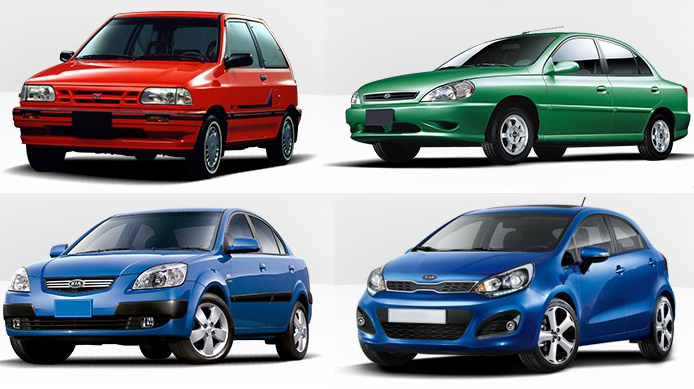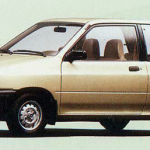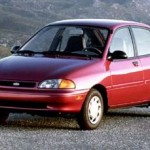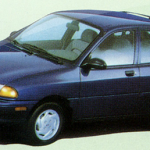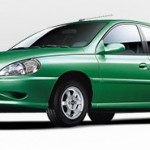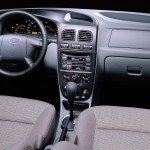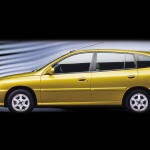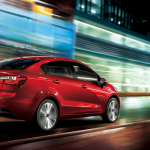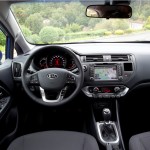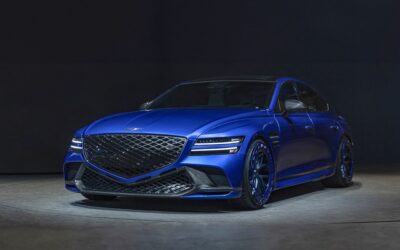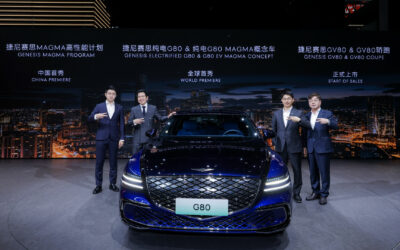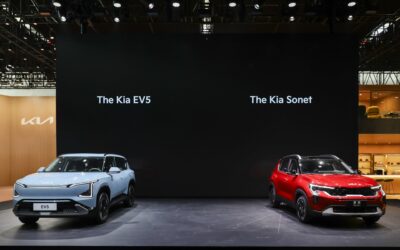Sit down, buckle up and let’s take a trip down memory lane to explore a magical makeover story that would make Oprah Winfrey cry (well maybe not Oprah). Today on The Korean Car Blog, and courtesy of Kia Buzz, we’re going to outline the design evolution of the Kia Rio and how it went from an ordinary subcompact to a top selling vehicle that has won multiple prestigious design awards.
1987 (Pride)
The Rio’s origin dates back to an earlier model which was known as the Kia Pride in 1987. This mini hatchback was sold in Korea from 1987-1999 (Kia couldn’t discontinue the Pride even though they launched the Avella due to its popularity and reliability) and was a joint project between Kia, Ford and Mazda. It was sold in the US as the Ford Festiva. Fitted with both 1.1- B1 and 1.3-liter B3 engines with 54 and 72 hp respectively. SAIPA built the Kia Pride in Iran under license and the company introduced a pickup body style in 2008 under the name “SAIPA Pick-Up”, with a 500-kilogram (1,100 lb) payload.
1994 (Avella)
The Pride became the Kia Avella in domestic Korea and was sold as the Ford Aspire in the US, but Avella couldn’t succeed its popularity as the Pride during that time). All Avellas came standard with 13 inch wheels, a four-speaker stereo, heated rear glass, anti-lock brakes (ABS), driver’s side airbag, and door impact beams. It was also the first South Korean car in its class to offer dual airbags and ABS-brakes. While the standard Avellas received the 73 PS (54 kW) 1.3 liter Mazda B3 engine, higher spec versions were available both with an SOHC and a more powerful DOHC version of the 1.5 liter B5 engine. The 105 PS (77 kW) DOHC version was only available in the four-door Avella Delta.
1999 (Rio)
The Avella was discontinued in 1999 and both it and the Pride (first generation Ford Festiva) were transformed to the Kia Rio (except it still goes by Pride in Korea). The Rio was now available in both hatchback and 4-door sedan body styles and featured a 96 horsepower, 1.5-litre DOHC gasoline engine from 2001-2002. The domestic Korean market versions did not include the 1.6-liter version, as the South Korean taxation system heavily penalizes cars of more than 1,500 cc. Claimed outputs for the domestic versions (JIS) were higher, at 84 hp for the little 1.3 and 108 hp for the DOHC 1.5.
Yes, these name changes might be confusing, but simply think of it as the classic tomato saying, “You say ‘tomayto,’ they say ‘tomahto.’Sometimes a car model goes by different names in various markets and regions.
2002 (Rio Facelift)
A few years later, the Rio received a slight redesign with new exterior and interior styling along with engine, suspension and brake upgrades. In Europe, the facelifted Rio received minor changes in external look and engine improvement of the 1.3 from 75 hp to 80 hp at 5,500 rpm, and 86 lb·ft (117 N·m) at 3,000 rpm.
2006 (Second Generation Rio)
A fairy godmother transformed Cinderella’s pumpkin into a stunning horse carriage, and in a similar fashion, bringing Peter Schreyer on board as Kia’s Chief Designer Officer was indeed magical. Three engines are available, a 1.6 litre DOHC engine with 110 hp, a lesser 1.4 litre version with 96 hp and a 1.5 CRDi engine with 110 hp. However, in the US market only the 1.6L gasoline engine is offered, in two body styles: a four-door-sedan and a five-door hatch.
In 2007, the South Korean government began testing approximately 4,000 pre-production Rio hybrid-electric models, with parent company Hyundai Kia Automotive Group later announcing and subsequently withdrawing anticipated release dates for the hybrid model
2010 (Second Generation Facelifted Rio)
In 2010 the Rio embraced Kia’s distinctive tiger nose grille and added some modern and high-tech features such as Bluetooth hands-free phone operation and a new gauge cluster.
2011 – Present (Third Generation Rio)
And after 25 years of enhanced design, performance, safety, features and fuel efficiency – we arrive at the present day All-New Rio. It has both style and performance with a choices of 1.2 “Kappa”, 1.4 “Gamma” engines and the 1.6 GDi (gasoline direct injection) engine, multiple trims, colors and options to meet the needs of drivers from all walks of life. Talk about the power to surprise!
Check out our previous posting, which dives into the details of the All-New Rio’s design code and story. Visit our Rio’s review (here) or Kia’s Global Rio microsite (here) to explore and customize your very own Rio virtually.
Note: Trims and specifications vary by region for more details about what’s available in your area, be sure to ask your local Kia dealer.
What do you think? What are your thoughts on the Rio’s design transformation? If you’d like to know the history of any other Kia models, let us know in the comments section.

